Few canine emergencies are as terrifying as choking.
As sudden in onset as it is serious, choking is more common than you’d think and requires immediate action. Sadly, not all owners know how to help a choking dog.
Below, we’ll discuss what to do if your dog is choking and how to reduce your pup’s risk of choking going forward.
Key Takeaways: What Do You Do When Your Dog Is Choking?
- Canine choking is a medical emergency, which requires prompt action. While you don’t want to panic, you need to remove the item if it’s preventing your pet from breathing or secure immediate veterinary care if your dog can still breathe normally.
- If you can’t reach the offending item with your fingers, you’ll need to employ the canine Heimlich maneuver. We explain the exact procedure below, but it works in the same basic way it does in humans — you’ll just perform the maneuver in a way that’s appropriate for the canine body.
- After you’ve solved the choking issue, check in with your vet and give your dog some time to recover. Choking is stressful (as is the removal process), so let your dog relax and drink small amounts of water afterwards. Do not provide any food until your vet gives you the green light to do so.
Signs Your Dog Is Choking
Luckily, the signs of choking are typically more obvious than most canine medical emergencies, allowing you to jump into action as soon as possible to help your four-legged friend.
Signs of choking in dogs include:
- Coughing
- Gagging
- Difficulty breathing
- Pawing at the mouth
- Excessive drooling
- Distress or panic
- Loss of consciousness
If you notice any of these symptoms and you suspect choking, act immediately.
What to Do If Your Dog Is Choking
Time is of the essence with choking, so you’ll want to start helping your dog as soon as possible. And while it may be difficult, it’s also important not to panic, as you need a level head and steady hand to help your pooch.
When your dog is choking:
- Open your dog’s mouth and see if you can spot the stuck item. Make sure you have good lighting (a friend with a flashlight is ideal) to get a good look inside your pup’s mouth.
- Sweep your dog’s mouth with your fingers to remove the offending item. Do not use tweezers or other tools to do so, and be careful to avoid pushing the stuck object further down your dog’s throat.
- If the stuck item is not impairing your dog’s ability to breathe, simply leave it in place and drive over to the vet immediately. This is especially important if the stuck object is a bone or something sharp. Removing an item from your dog’s throat requires considerable care to avoid causing further injury — a procedure best left to your vet if your dog can still breathe.
- If you cannot clear the stuck object with your fingers and it is impeding your dog’s ability to breathe, use the Heimlich maneuver for dogs (explained below). In such cases, you’ll need to get the object out of your dog’s throat ASAP, so that he can begin breathing again.
It’s important to note that your dog may be scared while choking, so be gentle, try to reassure your pup, and speak in a soothing voice. You want to help your fur friend without getting bit or upsetting him more than he already is
Don’t have easy access to a vet? You may want to consider getting help from JustAnswer — a service that provides instant virtual-chat access to a certified vet online.
You can discuss the issue with them, and even share video or photos if need be. The online vet can help you determine what your next steps should be.
While talking with your own vet — who understands the ins and outs of your dog’s history — is probably ideal, JustAnswer is a good backup option.
The Heimlich Maneuver for Dogs
Since four-footers come in an array of shapes, the Heimlich maneuver for dogs varies by the size of the canine. What may be helpful to one dog can be ineffective or harmful for others.
The Heimlich Maneuver for Large Dogs
Larger breeds are easiest to perform the Heimlich on, as their size allows you to mimic how the procedure is done on a human.
To perform the technique on large dogs, do the following:
- First, move behind your dog, grab his back paws and lift them in the air (moving him into the “wheelbarrow” pose). Sometimes, this is all that’s necessary to help your dog cough up whatever he’s choking on.
- You can also try slapping your dog firmly on the back four or five times while he’s in the wheelbarrow position. Sometimes this helps dislodge the stuck item.
- If neither the wheelbarrow position nor the back slaps work within a few seconds, wrap your arms around your pet’s waist.
- Clasp your hands beneath his ribcage.
- Pull your clasped hands upwards into the abdomen, aiming slightly toward the head. This will force air upwards to hopefully dislodge the stuck object. Be firm and steady in your movements, repeatedly squeezing four or five times in a row.
- Check your dog’s throat for the object and try to sweep it away again, if possible.
- If the object is still stuck, move back behind your dog and repeat the compressions if necessary. Continue repeated the entire procedure until you’ve managed to free the object and your dog can breathe again.
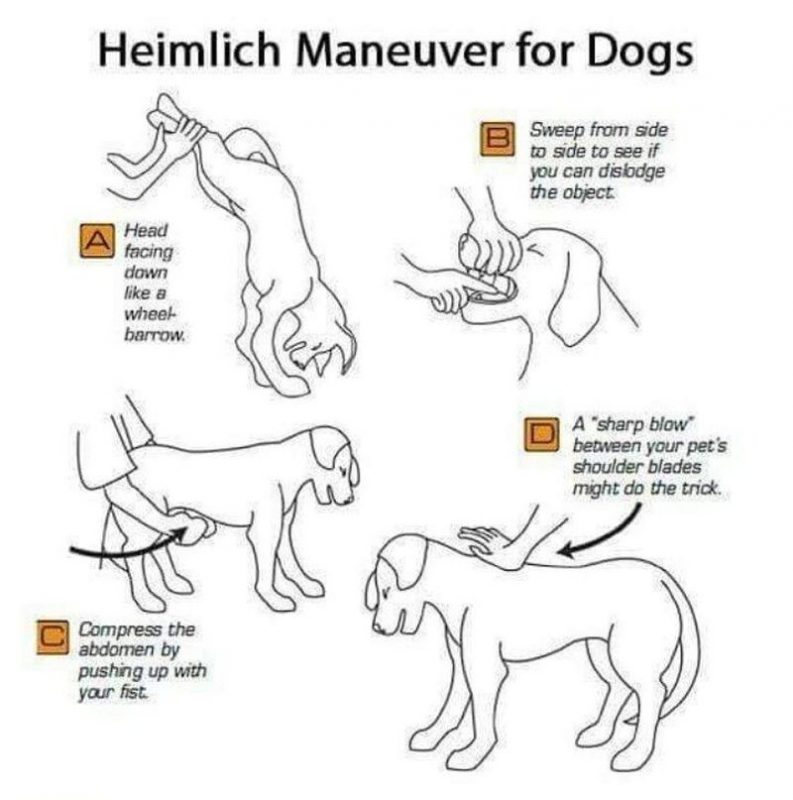
The Heimlich Maneuver for Small Dogs
It’s harder to perform the Heimlich maneuver on small dogs due to their little bodies, but the concept is still the same.
To perform the Heimlich maneuver on small dogs:
- Pick up your dog and turn him upside down. Sometimes, this is enough to allow him to cough up the stuck object.
- You can also try slapping your dog firmly on the back four or five times while he’s in the wheelbarrow position. Sometimes this helps dislodge the stuck item.
- If neither of these techniques work, sit down and place your dog in your lap (either on his side or on his back).
- Apply pressure beneath his ribcage in quick, firm bursts up and toward the head in sets of four or five. Depending how small your dog is, you may clasp your hands together or use one single hand to perform this maneuver.
- Check his mouth again and try to remove the trapped object.
- Repeat as necessary until the stuck object comes free.
Some owners find it easier to perform a modified version of the large dog Heimlich where you hold your small dog against your chest and apply pressure to his stomach.
Inverted Heimlich
Another method for helping a choking dog is the inverted Heimlich, which involves holding your dog upside down and letting gravity help you expel the trapped object. Obviously, this isn’t an option for giant breeds, but it’s worth noting.
Use caution and only try this if you can safely lift your dog and hold him securely.
To perform an inverted Heimlich maneuver on your pooch:
- Lift your dog and hold him so that he’s face down.
- Apply pressure beneath his rib cage in a steady set of five compressions aiming downward toward his head as you would with the regular Heimlich maneuver.
- Check your dog’s mouth and try to remove the object.
- Repeat the procedure until the stuck item is dislodged.
Once the object is cleared, contact your veterinarian to discuss if your pooch should be seen.
If The Heimlich Maneuver Fails
Fortunately, the Heimlich maneuver is usually effective at clearing an item stuck in your dog’s throat. But, if two or three sets of the canine Heimlich maneuver fail, it’s time to head to the nearest veterinarian for emergency treatment.
The same rule applies if the stuck object is a bone or other sharp-edged item that can cause serious damage (especially if your dog can still breathe normally). It’s important to go to the nearest vet (and preferably an emergency veterinary office) rather than your usual vet, as prompt treatment is imperative.
Once you’ve managed to get the offending item out of your dog’s throat, be sure to perform rescue breathing (dog CPR) if your pet isn’t breathing on his own.
What Should You Do After You Help Your Choking Dog?
Once the lodged object is cleared from your dog’s mouth or throat, the immediate medical emergency may be over, but your dog still needs care. This includes veterinary care that we discussed above and the extra attention that you’ll need to give.
After a choking incident:
- Check your pup’s mouth and throat: Check for any signs of lingering debris or oral injury caused by the lodged object.
- Calm your dog: Choking is traumatic, as is the Heimlich to a degree. You want to remain calm throughout treatment and sooth your dog once the object is dislodged.
- Contact your vet: Always contact your veterinarian after any choking incident to determine if in-office treatment is needed.
- Take things slow: Don’t rush back into your pooch’s routine with an afternoon run or adventure. Give him some time to recover, offer small amounts of water, and keep him relaxed.
- Dietary changes: Your dog’s throat may be sore after choking. So, wait to feed him until your vet has given you the green light to do so. A softened diet may be necessary for a few days as his throat heals.
- Consider the future: Look at the incident and see how you can do to prevent it going forward. This may include throwing out certain toys or choosing a different food source.
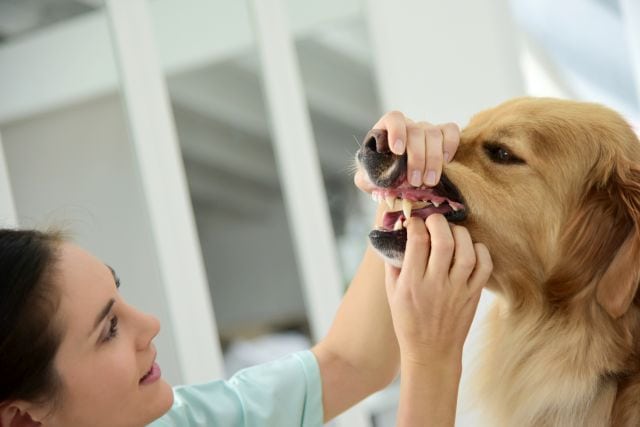
Complications in Dog Choking
Choking has several complications to watch for. These include more short-term issues that are obvious as well as potential long-lasting problems.
Some potential choking complications are:
- Oxygen deprivation: If your dog went without oxygen for any period, it’s important for him to be seen by a vet. He may need follow-up treatment.
- Mouth or throat damage: A lodged object can cause lacerations or abrasions in the mouth or throat. Sometimes, this damage is located deep in the throat and can only be seen using specialized veterinary tools.
- Rib injury: The Heimlich maneuver can cause rib damage, especially if your dog is small or fragile. But, as the old adage goes, “broken ribs heal, dead dogs do not.” So, be aware that the Heimlich maneuver can cause broken ribs, but don’t let that fact stop you from squeezing hard enough to expel the stuck item.
These potential complications make follow-up care with your veterinarian a must after any choking incident.
Items Dogs Commonly Choke On
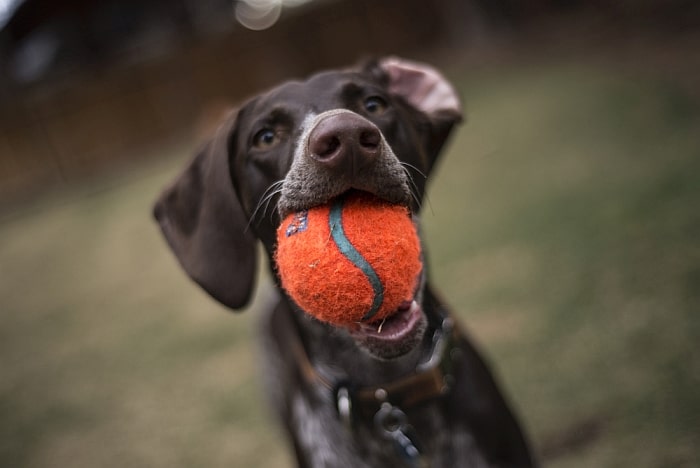
Many objects are canine choking hazards, with some more obvious than others, including those you may offer as treats as well as those your pup may swipe from the garbage.
Objects that dogs most commonly choke on are:
- Balls: Balls are loads of fun, but they’re also the perfect shape for getting stuck in your dog’s throat. Tennis balls are particularly risky, as they’re soft and malleable enough to be swallowed and then expand in the throat.
- Bones: Whether they’re backyard finds or garbage bag goodies, bones pose a serious risk of choking and mouth injuries.
- Chews: Rawhides, nylon bones, hooves, and more all present a choking risk if your dog is a swallower.
- Food: Feeding kibble that is too large or offering large chunks of meat can lead to choking.
- Toys: Your dog’s favorite rope toy is a choking risk, as are any unattended children’s toys lying around.
- “Treasures” from the garbage can. A litany of items lurking in the trash — ranging from plastic items to diapers to pencils — may cause your dog to choke.
Preventing Your Dog From Choking in the Future
Choking isn’t always preventable, but you can lessen the risk by practicing a few household changes, including:
- Pick the right chew for your dog’s chewing style and age. Avoid anything that has a high likelihood of splintering or breaking apart.
- Select the safest, most resilient toys possible that won’t easily break or rip into smaller pieces.
- Monitor your dog while he’s chewing or playing with toys.
- Keep children’s toys out of your pup’s reach.
- Opt for digestible chews that break down easier.
- Feed kibble that is suitable in size for your dog.
- Chop up large pieces of food into bite-sized pieces.
- Secure all trash cans with locking lids or store them out of reach, such is in a cabinet.
You know your doggo best, and if something seems like a risk, treat it as such. It’s always better to be safe than sorry.
***
Did you know how to do the doggy Heimlich maneuver before today? Have you ever had to use it? Let us know in the comments.
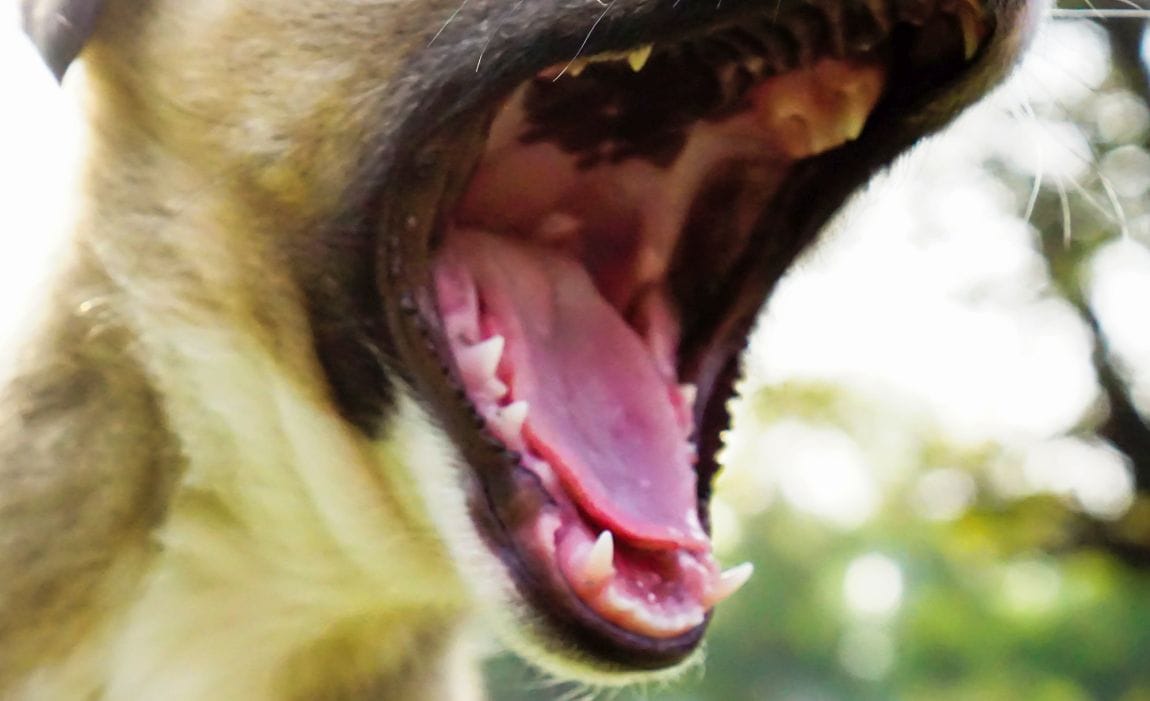


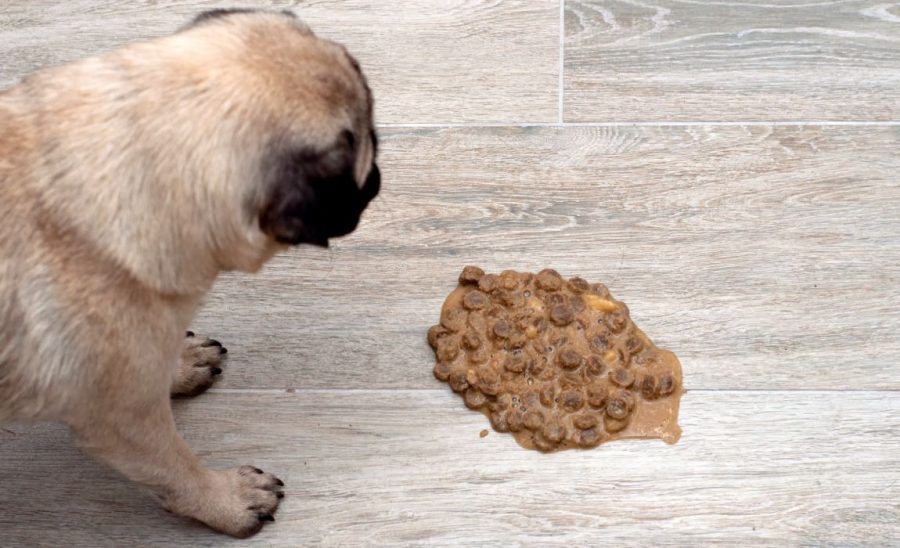


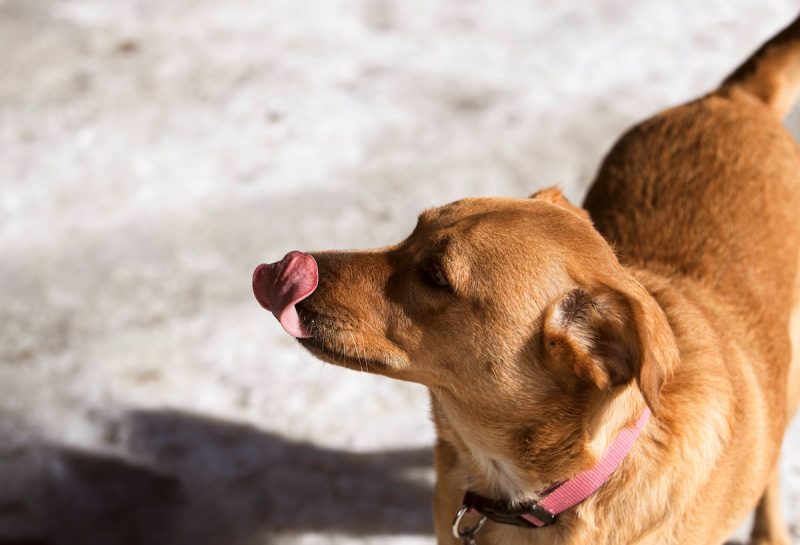
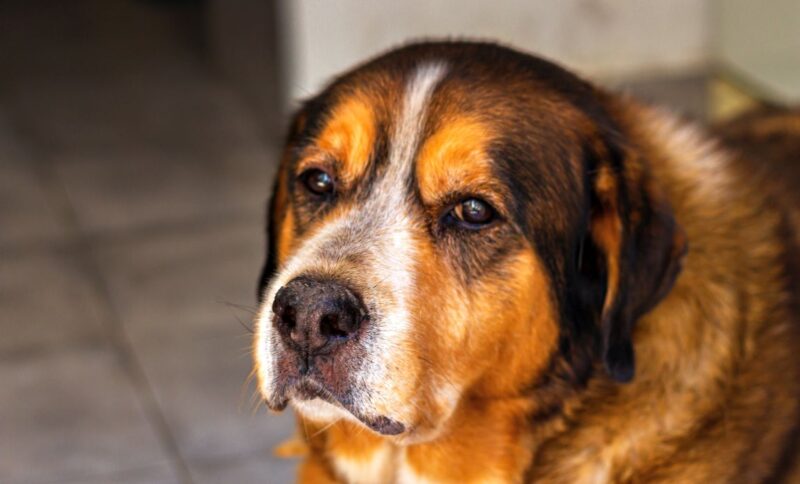

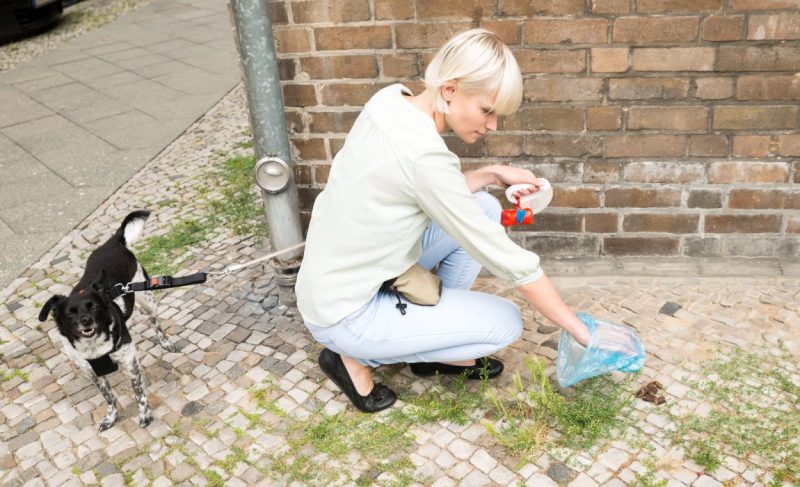
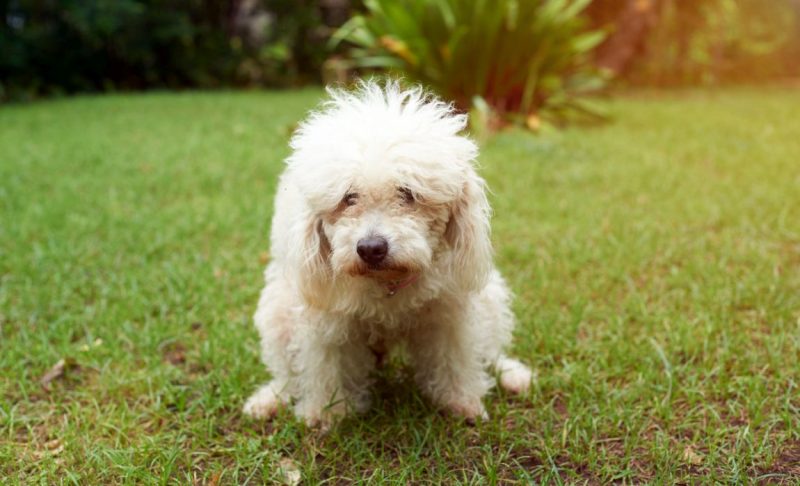
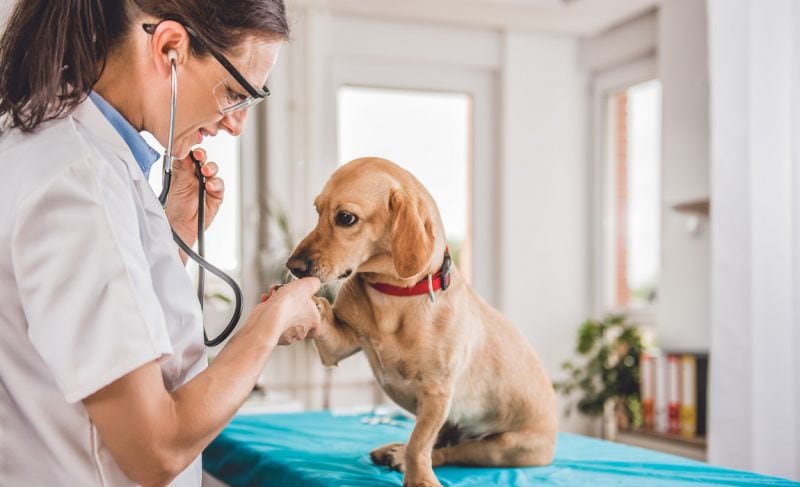
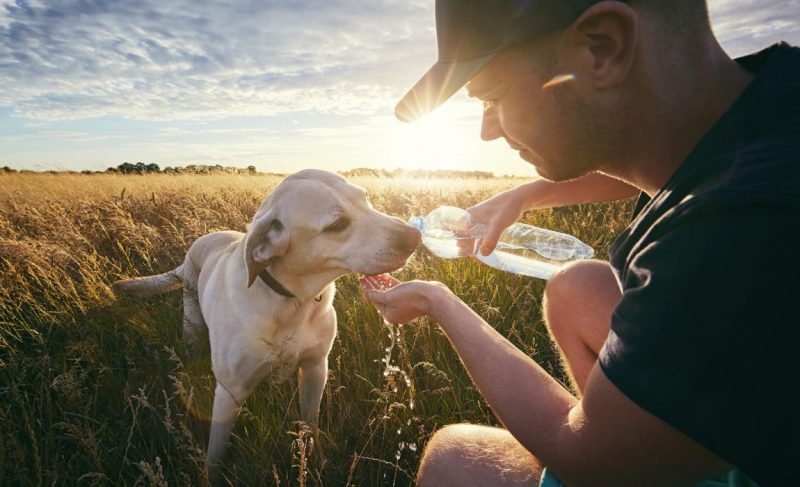

Leave a Comment